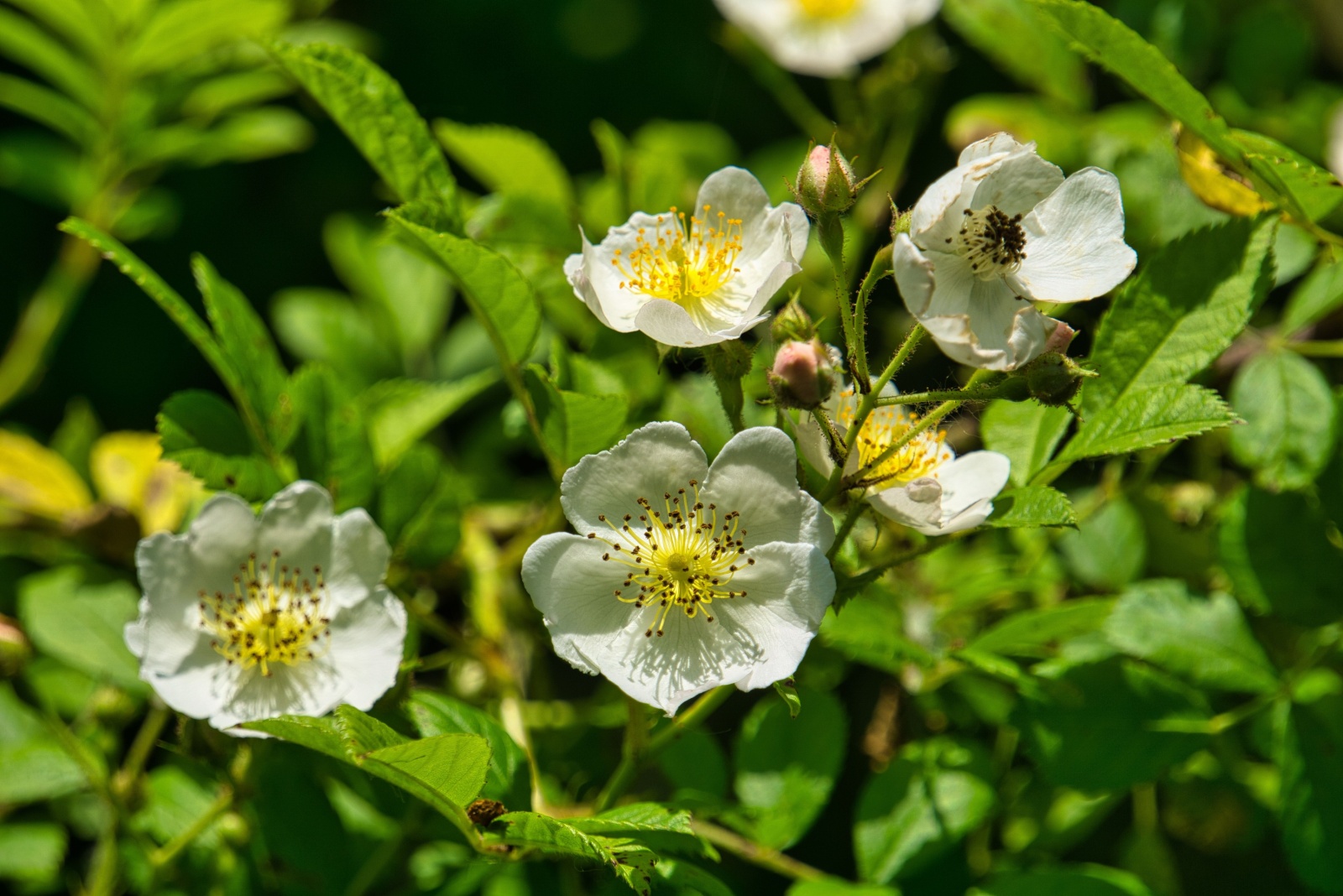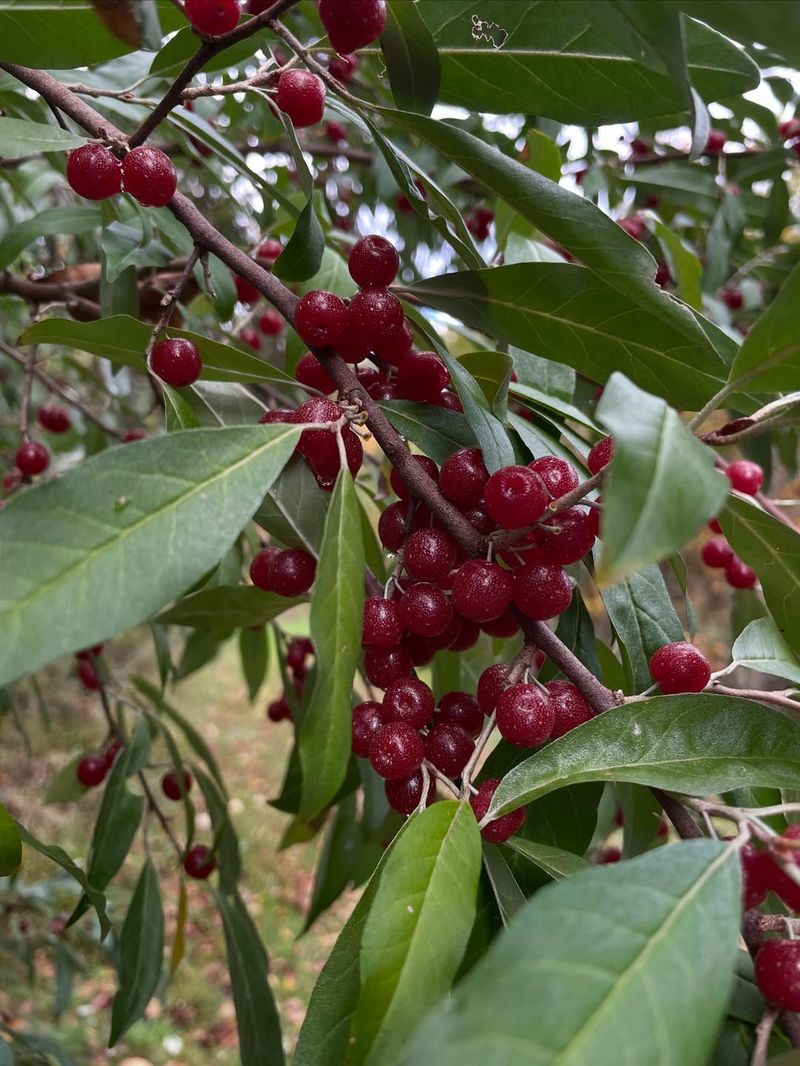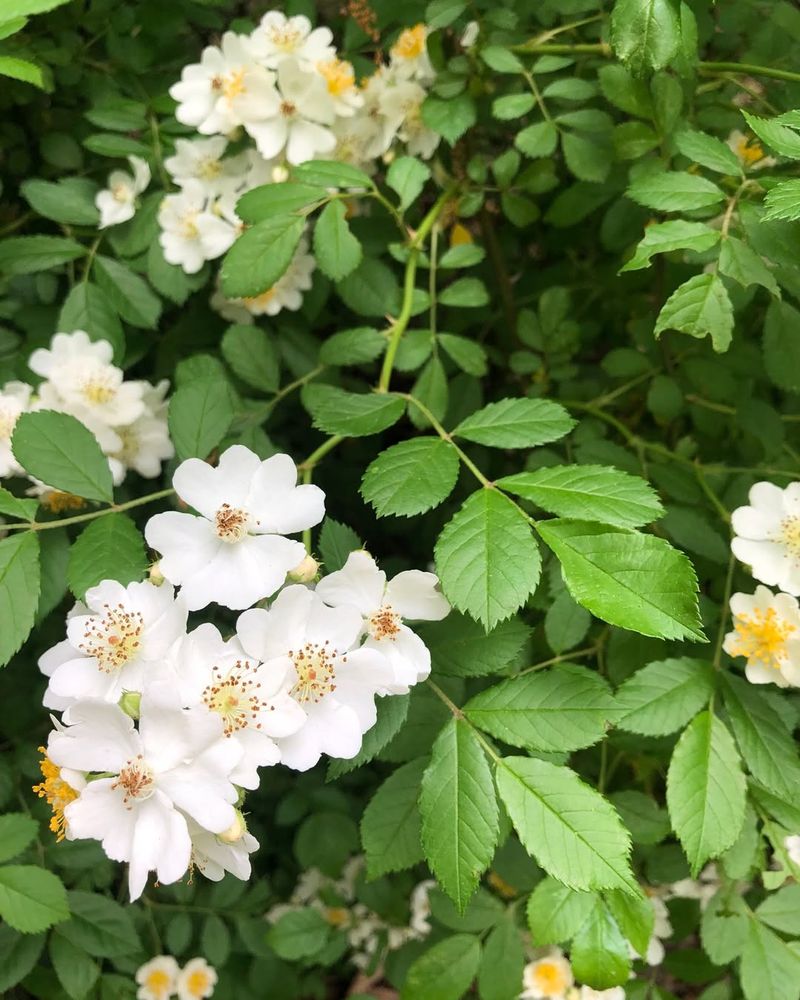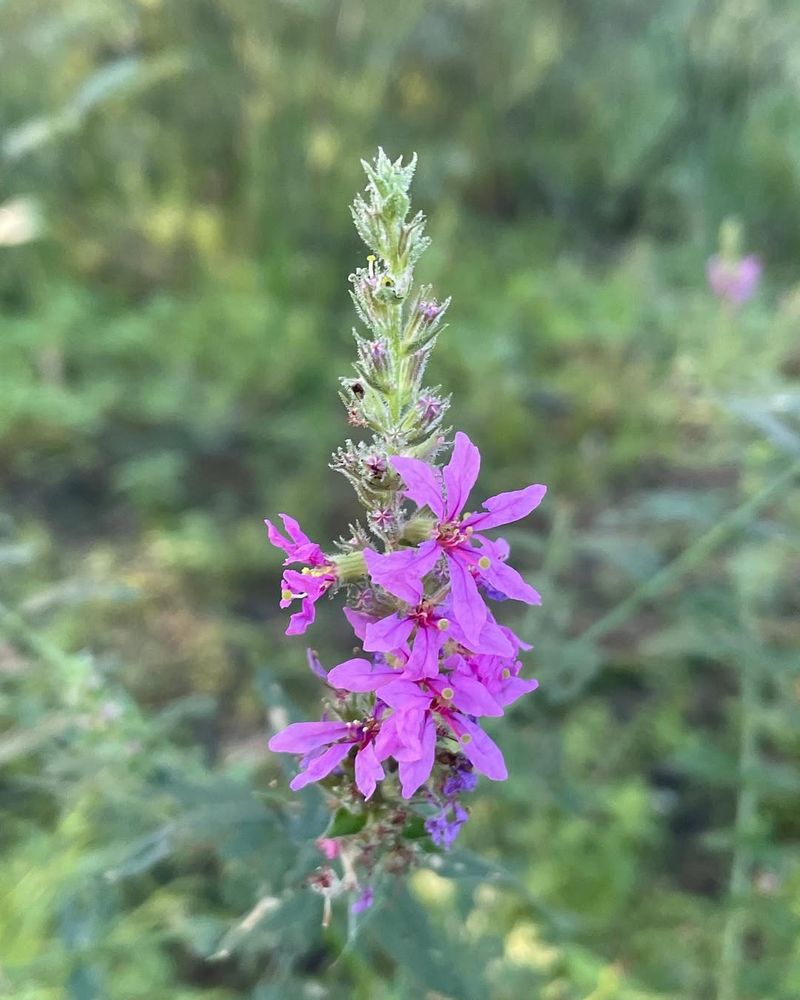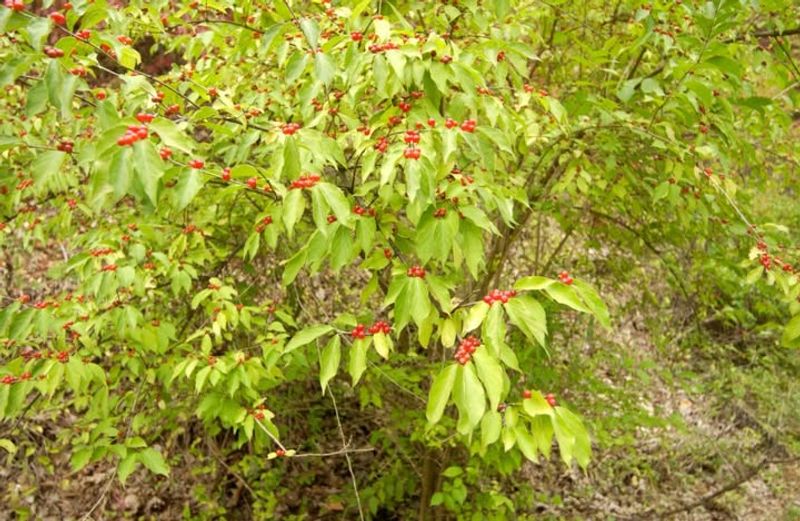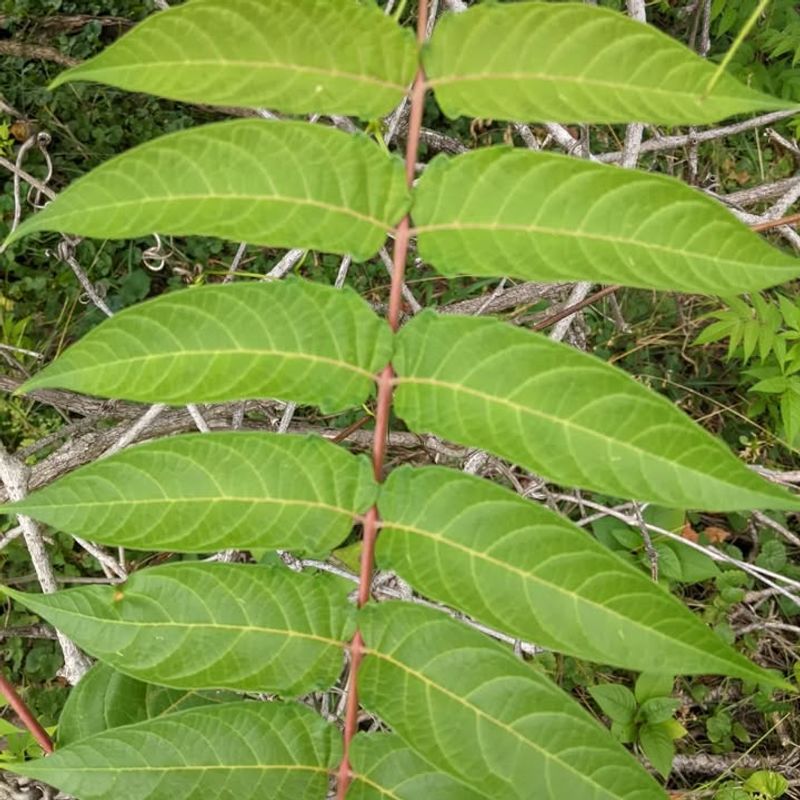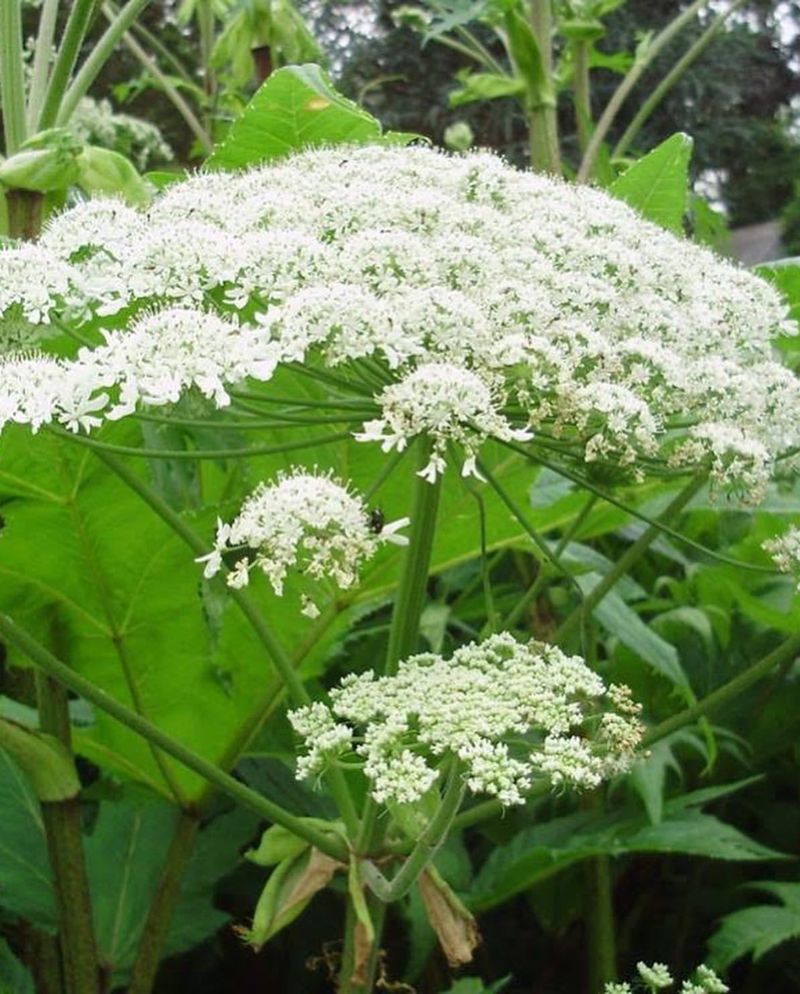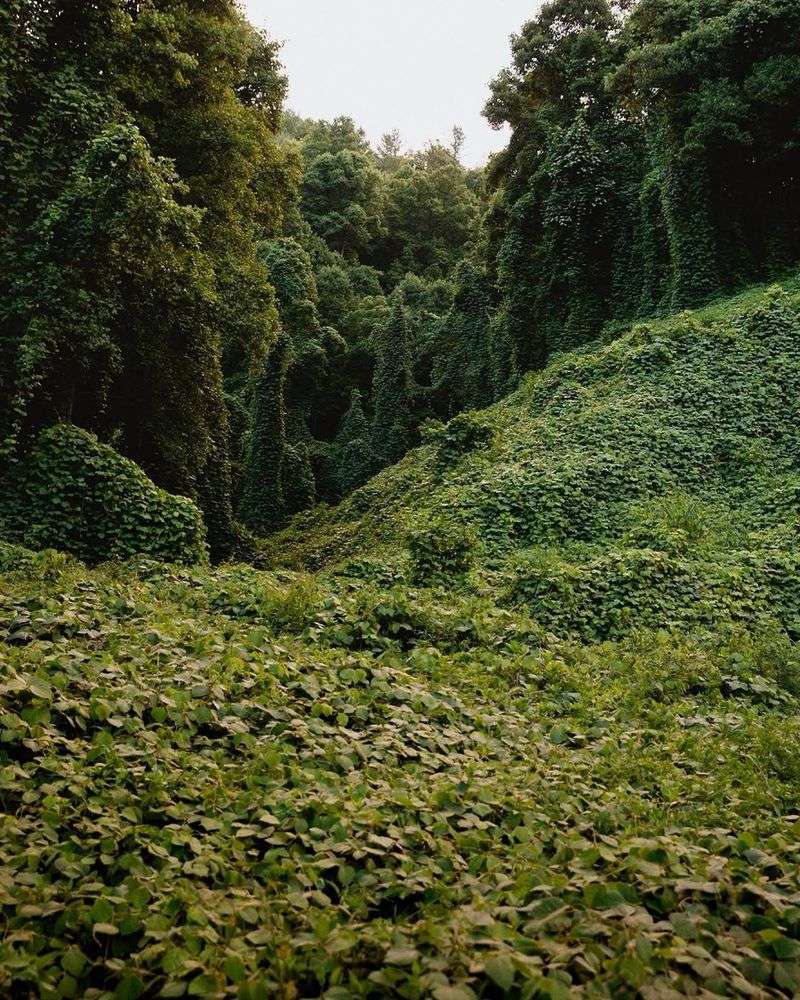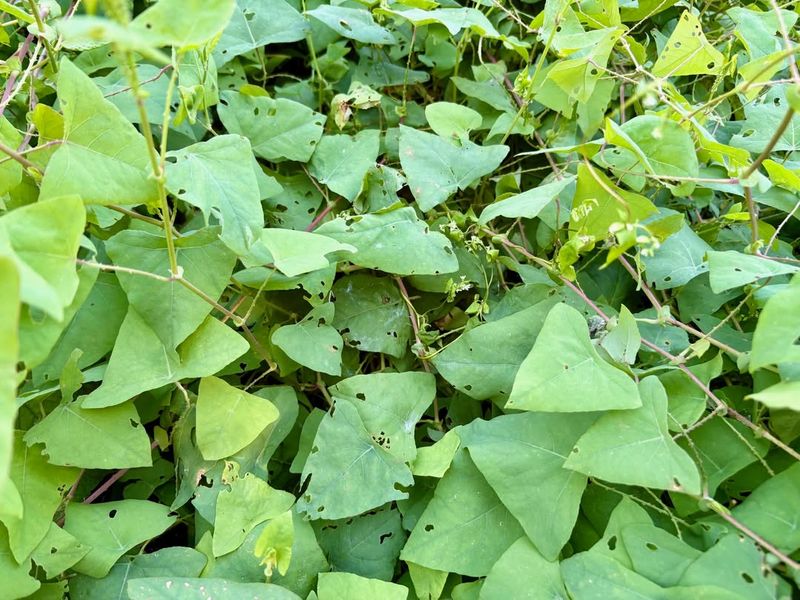Ohio takes plant regulations seriously to protect its environment and agriculture. Moving certain plants across county lines or state borders can spread diseases, pests, and invasive species that harm native ecosystems.
Understanding which plants are restricted helps you stay legal and protects Ohio’s natural beauty for everyone to enjoy.
1. Japanese Knotweed
Bamboo-like stems and heart-shaped leaves make this plant look harmless, but Japanese knotweed is a nightmare for Ohio property owners. Its roots can crack foundations and damage sidewalks with incredible force.
Once established, this invasive species spreads rapidly through underground rhizomes that can travel up to 20 feet. A tiny fragment can start a whole new colony.
Ohio law prohibits transporting this plant because it destroys native habitats and costs millions in removal efforts annually.
2. Autumn Olive
Silver-coated leaves shimmer beautifully in sunlight, making autumn olive seem like a decorative dream for landscaping projects. Birds love the red berries, which is exactly how this shrub spreads so aggressively across Ohio.
Originally planted for wildlife habitat and erosion control, it quickly became a problem child. The shrub outcompetes native plants for sunlight, water, and nutrients.
Moving autumn olive within Ohio is restricted because it transforms diverse ecosystems into single-species thickets.
3. Multiflora Rose
Fragrant white flowers might fool you into thinking multiflora rose is just another pretty wildflower. Those innocent blooms hide vicious thorns and an aggressive spreading habit that farmers despise.
Each plant produces thousands of seeds yearly, carried far and wide by birds and mammals. Dense thickets form quickly, blocking pastures and hiking trails.
Ohio restricts movement of this rose because it reduces grazing land and creates impenetrable barriers that wildlife cannot navigate safely.
4. Common Buckthorn
Dark berries dangle from branches like Halloween decorations, but common buckthorn is no treat for Ohio forests. This European import leafs out earlier than native trees and keeps its leaves longer.
That extended growing season gives buckthorn an unfair advantage, shading out competition and dominating understory areas. Its berries act as a laxative for birds, spreading seeds rapidly.
Transportation restrictions exist because buckthorn degrades forest health and reduces biodiversity throughout affected areas.
5. Purple Loosestrife
Magenta flower spikes create stunning displays along wetlands, tempting gardeners to transplant this beauty to their water features. Each plant produces millions of seeds that float, stick to animals, and hitchhike on boots.
Wetlands choked with purple loosestrife lose their ability to filter water and provide habitat for native species. Ducks, frogs, and fish suffer when this plant takes over.
Ohio prohibits moving purple loosestrife to preserve critical wetland ecosystems that protect water quality statewide.
6. Bush Honeysuckle
Sweet-smelling flowers and bright red berries made bush honeysuckle a landscaping favorite decades ago. Homeowners planted it for privacy screens without realizing the monster they were unleashing.
Birds spread the berries into forests where honeysuckle forms dense understory layers that block sunlight from reaching native wildflowers. Young trees cannot establish themselves in the deep shade.
Movement restrictions help prevent further spread of this shrub that fundamentally alters Ohio forest structure and composition.
7. Garlic Mustard
Crushing the leaves releases a distinct garlic odor that gives this plant its memorable name. Garlic mustard might seem like a harmless woodland herb, but it is actually a silent forest killer.
Chemicals released from its roots poison the soil fungi that native trees depend on for nutrient absorption. Spring wildflowers disappear when garlic mustard dominates.
Ohio restricts this plant because a single population can spread rapidly, destroying the delicate balance of forest floor ecosystems permanently.
8. Tree Of Heaven
Tropical-looking compound leaves and rapid growth make tree of heaven appear exotic and desirable for quick shade. The name sounds divine, but this tree is actually an ecological nightmare for Ohio.
Roots produce chemicals that kill nearby plants, and broken roots sprout new trees aggressively. Just one tree can create a dense grove within years.
Transportation is illegal because tree of heaven damages infrastructure, harbors spotted lanternflies, and eliminates native vegetation wherever it establishes populations successfully.
9. Giant Hogweed
Towering stems reach heights of 15 feet, crowned with white flower umbrellas that look like something from a fantasy novel. Beauty turns dangerous when sap contacts human skin in sunlight.
The clear sap contains chemicals that cause severe burns and blistering that can last for years. Even brushing against giant hogweed can send you to the emergency room.
Ohio strictly prohibits moving this plant to protect public health and prevent its spread near trails, parks, and residential areas statewide.
10. Kudzu
Southerners call it the vine that ate the South, and Ohio wants no part of that reputation. Kudzu grows up to a foot per day during peak season, smothering everything in its path.
Trees, telephone poles, abandoned buildings, and even moving vehicles can disappear under its leafy blanket. The weight of vines can topple mature trees and collapse structures.
Movement restrictions aim to keep kudzu from gaining the foothold in Ohio that has devastated millions of acres across southern states.
11. Mile-A-Minute Weed
Triangular leaves and recurved thorns cover vines that truly live up to their speedy nickname. Mile-a-minute weed can grow six inches daily, draping over shrubs and young trees like a thorny blanket.
Those sharp thorns make removal painful and difficult for landowners trying to reclaim infested areas. Small blue berries ensure birds spread it rapidly to new locations.
Ohio restricts this vine because it smothers native vegetation, reduces forest regeneration, and creates impenetrable tangles in natural areas and farmland edges.

